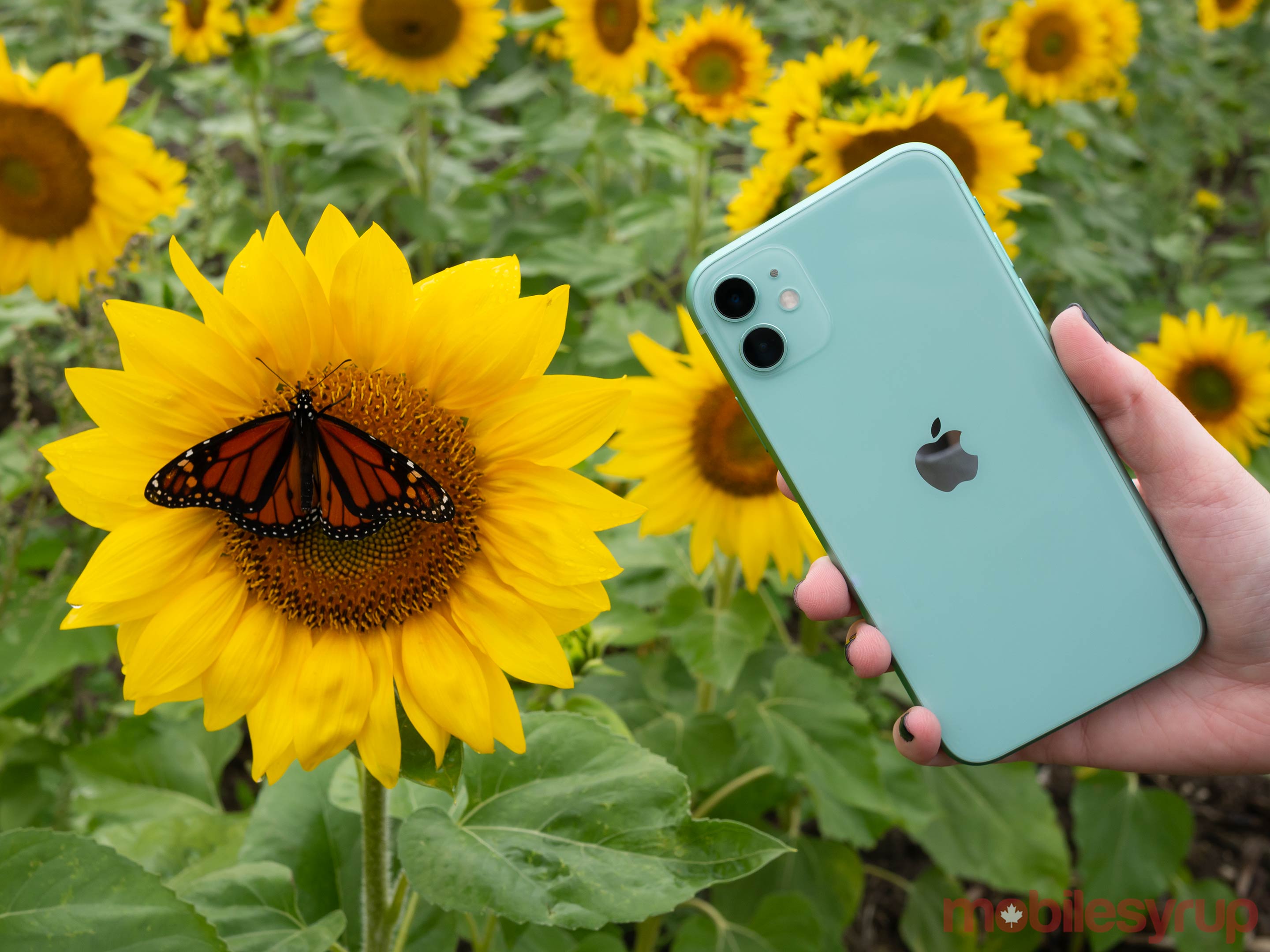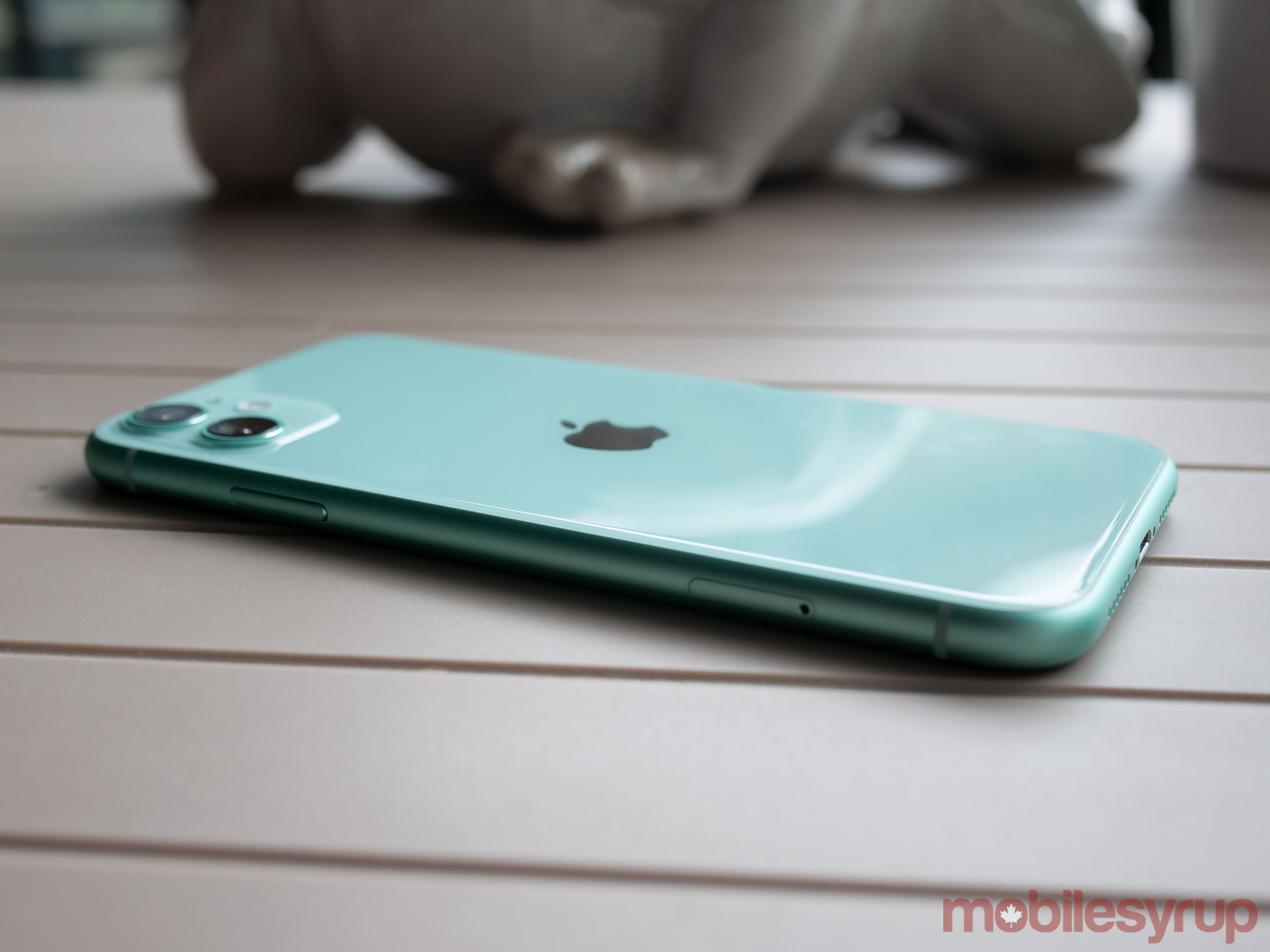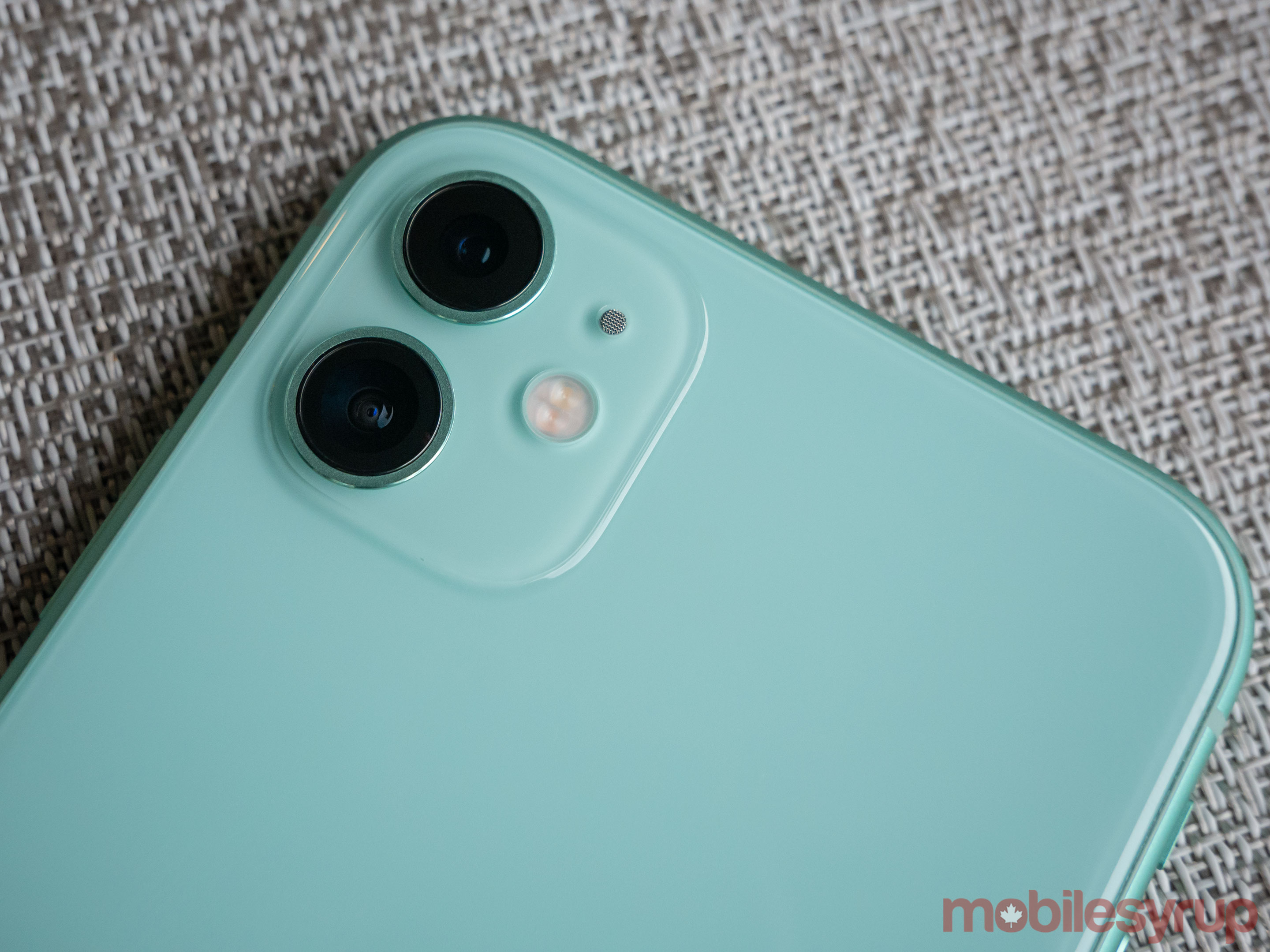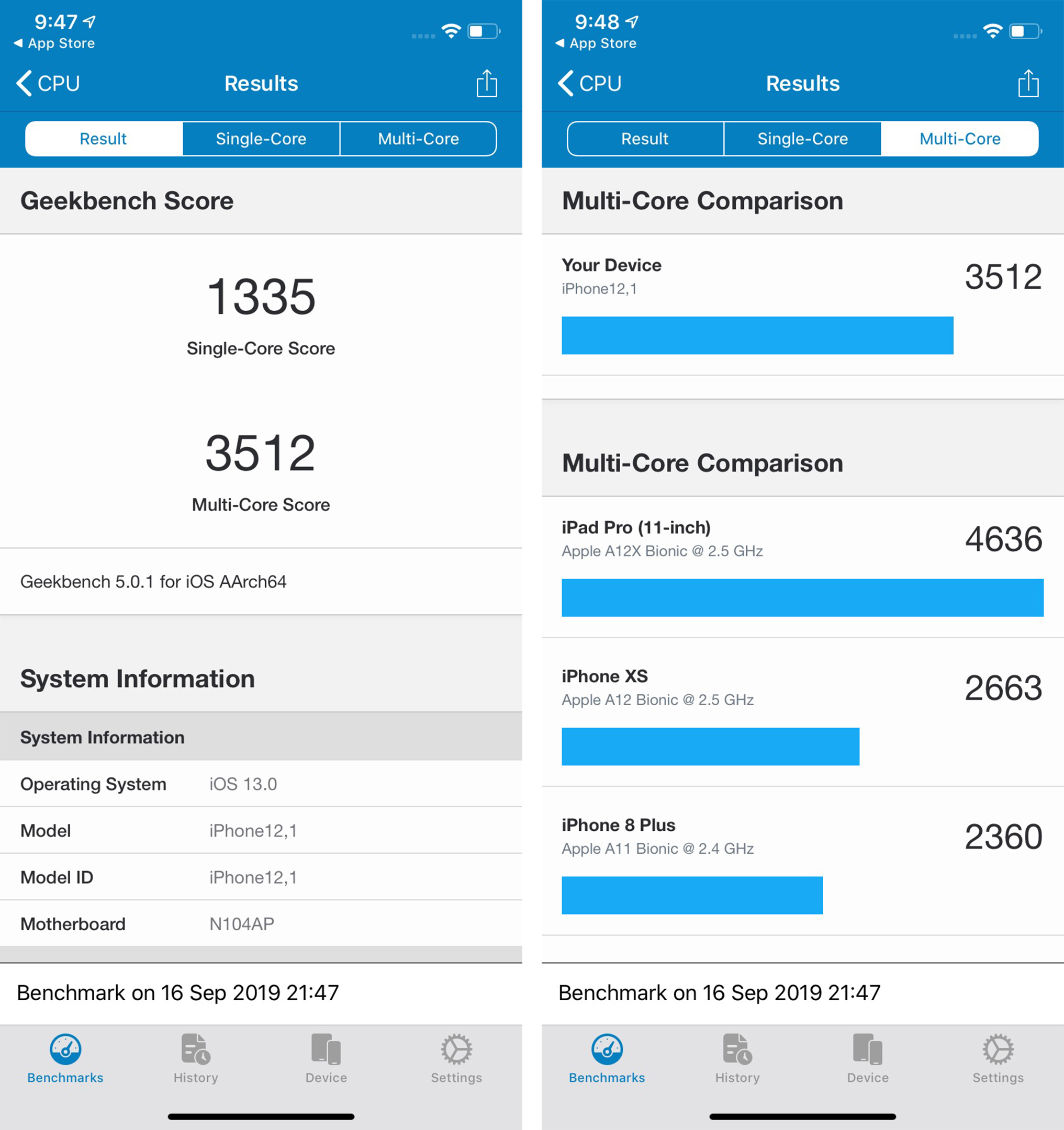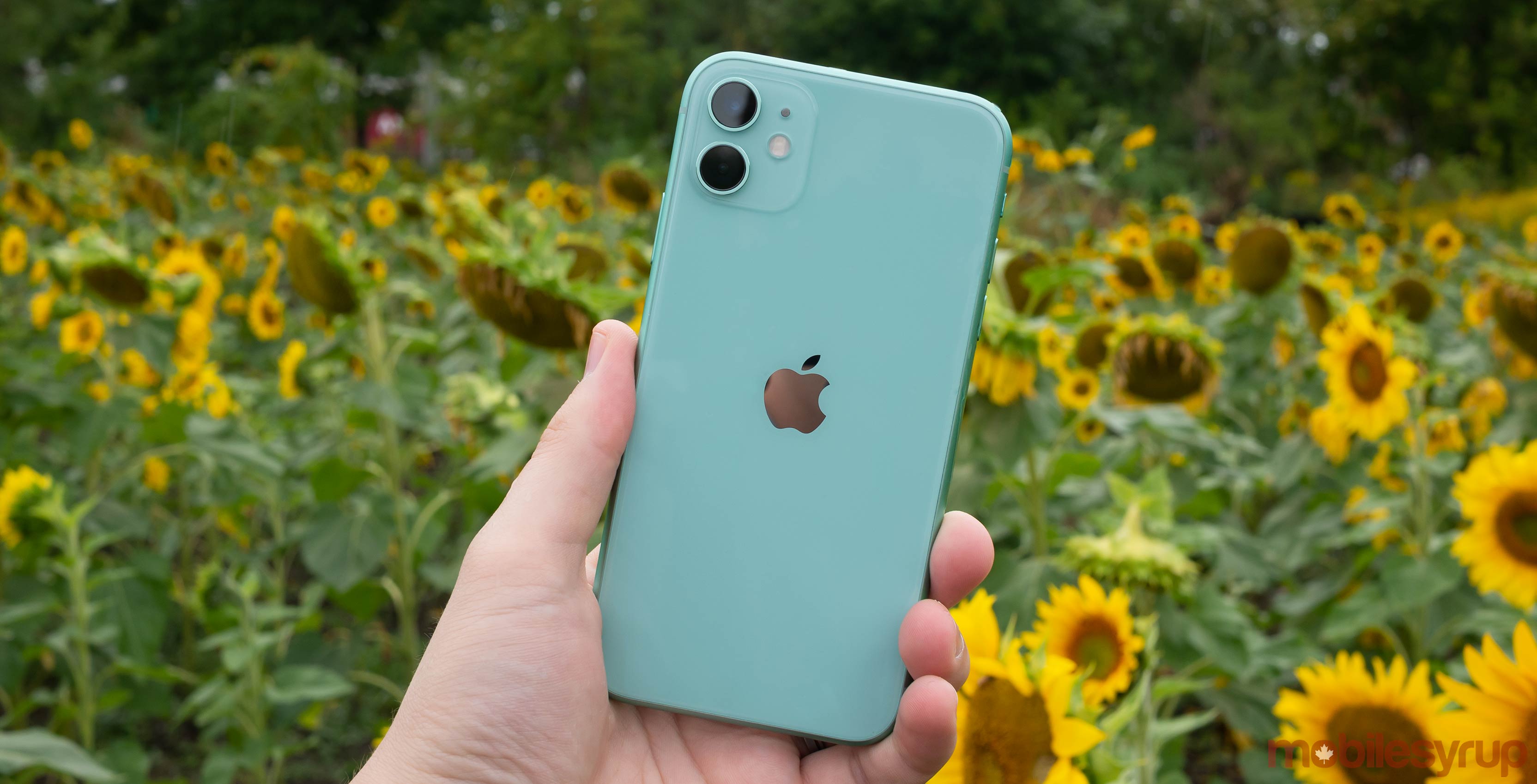
The Pros
- New colours are great
- Ultra wide angle camera is great
- Decent price
The Cons
- No OLED display
- Bezels are still large
- No zoom lens
What’s most interesting about this year’s iPhone 11 is the fact that it’s no longer called the iPhone XR.
While a subtle change, there’s symbolic meaning to this naming shift. Now, as far as Apple is concerned, the slightly cheaper iPhone 11 is the smartphone it’s marketing to everyone. On the other hand, the iPhone 11 Pro and iPhone 11 Pro Max are for Apple users who want the best and care about specific features like an OLED display and optical zoom.

Though there are subtle feature differences between both the iPhone 11 and the iPhone 11 Pro, both smartphones are very similar when it comes to the features that matter to the average Apple user — snapping great photos, a sleek look and the feel of a premium device.
This iPhone 11 review will often link back to my iPhone 11 Pro, and 11 Pro Max review.
iPhone 11
iPhone XR
Display
6.1-inch, LCD Liquid Retina display, 1792 x 828 pixels
6.1-inch, LCD Liquid Retina display, 1792 x 828 pixels
Processor
A13 Bionic chip
A12 Bionic chip
RAM
4GB
3GB of RAM
Storage
64GB, 128GB, 256GB
64GB, 128GB, 256GB
Dimensions (in.)
150.9 x 75.7 x 8.3mm
150.9mm x 75.7mm x 8.3mm
Weight
194g
194g
Rear Facing Camera
12-megapixel (f/1.8, OIS, wide angle) + 12-megapixel (f/2.4, OIS, ultra wide), quad-LED 'True Tone' flash
12-megapixel (f/1.8, OIS, wide angle)
Front Facing Camera
12-megapixel (f/2.2)
7-megapixel (f/2.2)
OS
iOS 13
iOS 12
Battery
3046mAh
Up to 16 hours of video playback
Network Connectivity
GSM/HSPA/LTE
GSM / HSPA / LTE / Band 66
Sensors
TrueDepth Camera Sensor, Face ID, accelerometer, gyro, proximity, compass, barometer
TrueDepth Camera Sensor, Face ID, accelerometer, gyro, proximity, compass, barometer
SIM Type
Nano SIM, eSIM
Nano SIM, eSIM
Launch Date
September 20, 2019
October 27, 2018
Misc
Colours: Black, Green, Yellow, Product Red, Purple, White |
Colours: White, Black Blue, Coral, Yellow, Product Red | IP67 water/dust resistant
Display
iPhone 11
6.1-inch, LCD Liquid Retina display, 1792 x 828 pixels
iPhone XR
6.1-inch, LCD Liquid Retina display, 1792 x 828 pixels
Processor
iPhone 11
A13 Bionic chip
iPhone XR
A12 Bionic chip
RAM
iPhone 11
4GB
iPhone XR
3GB of RAM
Storage
iPhone 11
64GB, 128GB, 256GB
iPhone XR
64GB, 128GB, 256GB
Dimensions (in.)
iPhone 11
150.9 x 75.7 x 8.3mm
iPhone XR
150.9mm x 75.7mm x 8.3mm
Weight
iPhone 11
194g
iPhone XR
194g
Rear Facing Camera
iPhone 11
12-megapixel (f/1.8, OIS, wide angle) + 12-megapixel (f/2.4, OIS, ultra wide), quad-LED 'True Tone' flash
iPhone XR
12-megapixel (f/1.8, OIS, wide angle)
Front Facing Camera
iPhone 11
12-megapixel (f/2.2)
iPhone XR
7-megapixel (f/2.2)
OS
iPhone 11
iOS 13
iPhone XR
iOS 12
Battery
iPhone 11
3046mAh
iPhone XR
Up to 16 hours of video playback
Network Connectivity
iPhone 11
GSM/HSPA/LTE
iPhone XR
GSM / HSPA / LTE / Band 66
Sensors
iPhone 11
TrueDepth Camera Sensor, Face ID, accelerometer, gyro, proximity, compass, barometer
iPhone XR
TrueDepth Camera Sensor, Face ID, accelerometer, gyro, proximity, compass, barometer
SIM Type
iPhone 11
Nano SIM, eSIM
iPhone XR
Nano SIM, eSIM
Launch Date
iPhone 11
September 20, 2019
iPhone XR
October 27, 2018
Misc
iPhone 11
Colours: Black, Green, Yellow, Product Red, Purple, White |
iPhone XR
Colours: White, Black Blue, Coral, Yellow, Product Red | IP67 water/dust resistant
Colour party
Just like with the iPhone XR, Apple’s iPhone 11 is a colourful affair, with ‘Purple’ and ‘Green’ being this year’s new hues. While the photos you’ll see in this review are of the new aqua green colour, I’m also really fond of Apple’s Purple iPhone 11 and featured it prominently in my hands-on with the phone.
The iPhone 11’s other colours — ‘Yellow,’ ‘Black,’ ‘White’ and ‘Red’ — have also shifted slightly, but still evoke a muted 1970s feel to them.
The iPhone 11 looks identical to the iPhone XR in nearly every way, with the only exception beyond the new colours being its bulky camera bump that matches the iPhone 11 Pro’s.
Just like the Pro, the iPhone 11’s rear is cut from a single pane of glass, including the sizeable two-camera bump. Unlike the iPhone 11 Pro though, the iPhone 11’s rear remains a glossy fingerprint magnet, with Apple reserving the matte back for its higher-end smartphone.
I don’t necessarily dislike the glossy glass rear, but I missed the Pro’s matte backing during my time using the iPhone 11.
It’s also strange the iPhone 11 features a square camera bump despite only including two camera lenses on its back. It’s likely Apple aimed to keep the design language of the iPhone 11 series as uniform as possible, but it still seems unnecessary. Given the phone only features two camera lenses, the square camera bump doesn’t stand out entirely as much as it does with the iPhone 11 Pro and Pro Max.
Regarding the look alone, not much has changed about the iPhone 11 when compared to the XR, including the phone’s sizable bezels and 5.8-inch display. This means that if you weren’t a fan of the XR’s design, the new iPhone 11 isn’t going to change your mind (unless you’re a huge fan of purple or green).
Say hello to wide-angle shots
One of the main differences between the iPhone 11 and the XR is that the phone features two lenses instead of one.
Along with the XR’s 12-megapixel, f/1.8, 26mm shooter, the iPhone 11 also features the same 12-megapixel, f/2.4 13mm ultra wide-angle lens as the iPhone 11 Pro. This means that the iPhone 11’s camera is capable of capturing much wider shots.
Further, the iPhone 11’s front-facing camera has been upgraded from 7-megapixels at f/2.2 to 12-megapixels at f/2.2.

What the iPhone 11’s camera array is missing when compared to the Pro is the device’s telephoto lens. The phone also features the Pro’s excellent ‘Night Mode’ and improved, more natural-looking HDR.
Night Mode seems to perform just as well as it does with the iPhone 11 Pro, matching the Pixel 3’s ‘Night Sight’ functionality in terms of quality. For an in-depth comparison, check out my iPhone 11 Pro and iPhone 11 Pro Max review.
Even other photography features are carried over from the iPhone 11 Pro, including Portrait Mode — which is now optical — and various effects like ‘Highkey Mono’ and adjusting the intensity of lighting. The camera is also capable of shooting 4K video at 60fps, as well as the dreaded 120fps ‘slofie.’
In nearly every way, the camera experience the iPhone 11 offers is identical to its more expensive sibling. Given the much-needed step up the iPhone 11 Pro’s camera functionality is over what the iPhone XS was capable of, this is a good thing.
Under the hood
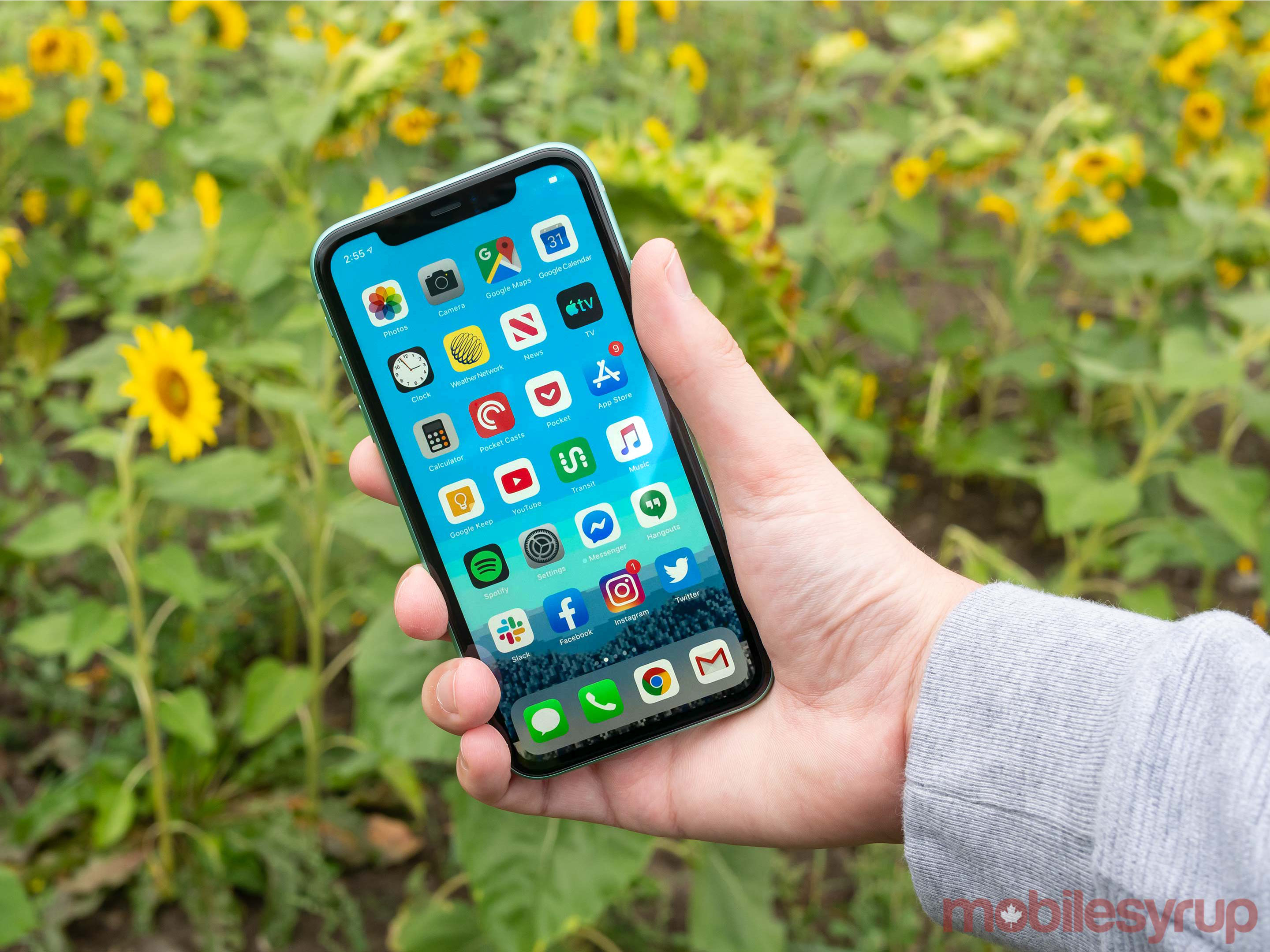
While the iPhone 11 features the 20 percent faster and 30 percent more efficient A13 Bionic processor, coupled with a four-core GPU that is 20 percent faster and uses up to 40 percent less power, battery life has only been improved by one additional hour when compared to the XR (Geekbench scores are below).
More battery life is always great, but it would have been better if Apple squeezed out an extra five hours of battery into the iPhone 11 like it managed to do with the iPhone 11 Pro and iPhone 11 Pro Max.
It’s great to see that the phone still features Apple’s latest processor technology, just like the iPhone XR did when it dropped last year. This means that the phone’s performance is smooth and that it’s capable of running the latest iOS apps with ease.
The one major drawback when comparing the iPhone 11 to the Pro or Pro Max is the fact that the phone still features a ‘Liquid Retina’ LCD display that measures in at 828 x 1792 pixel resolution. Android manufacturers selling phones at similar price points have long moved on to OLED display technology, not to mention that fact that the iPhone 11’s screen still isn’t 1080p. Even Apple’s higher-end iPhone offerings made the jump to OLED with the iPhone X.

In 2019, an LCD display in an iPhone that costs over $900 CAD is a steep asking price. That said, just like last year the Liquid Retina screen still looks great. Yes, the OLED display featured in the iPhone 11 Pro and 11 Pro Max is brighter and more vibrant, but only to someone who knows what to look for.
The average Apple user likely won’t be able to tell the difference between the two screen technologies. Even though someone like myself might take issue with Apple including an LCD display in its iPhone designed for everyone, this won’t be a problem for most people.
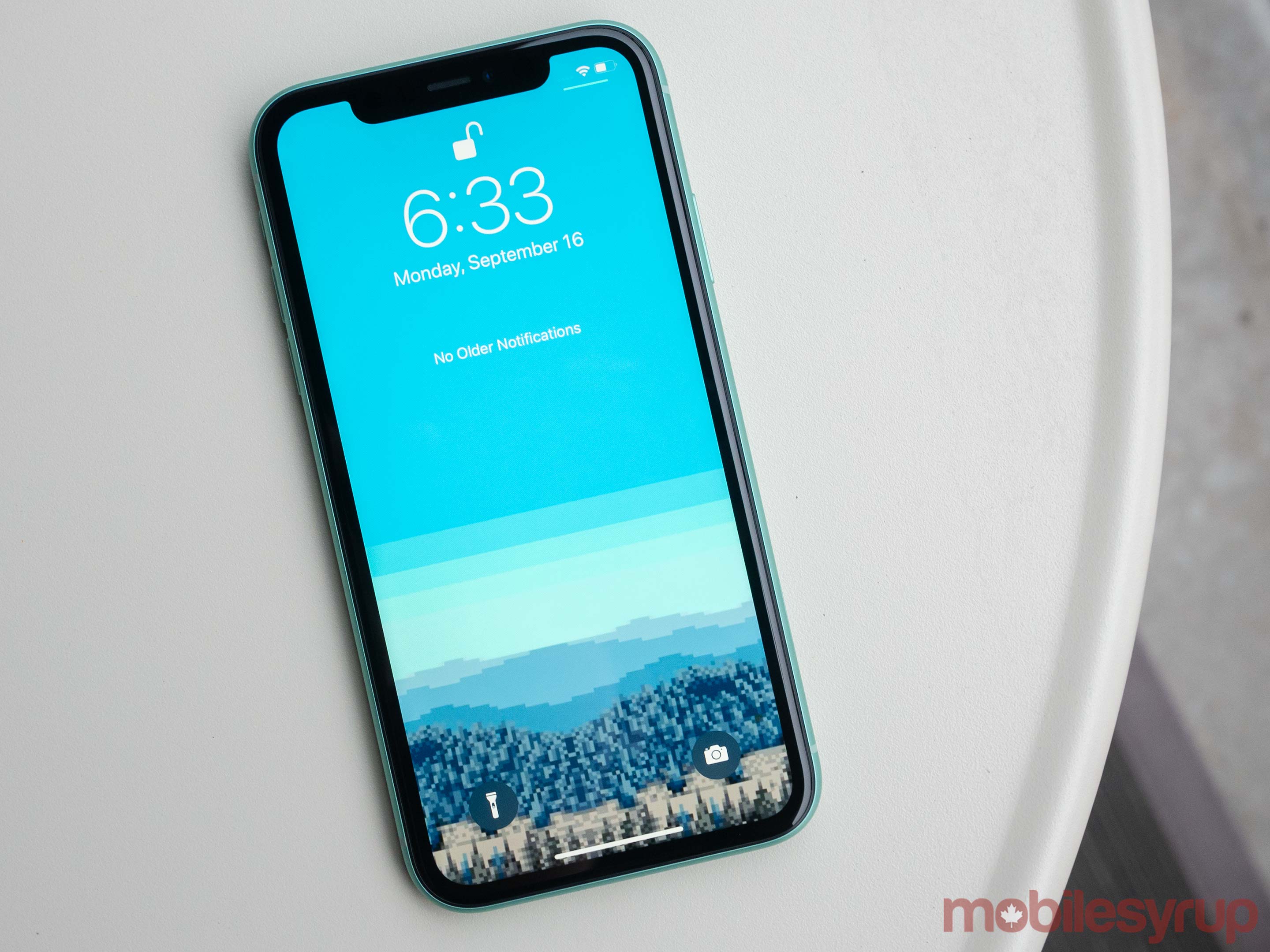
Still the one to buy
Unless you're the type of person who needs the very best iPhone out there every year, Apple's iPhone 11 is the 2019 Apple smartphone that makes the most sense for the average Apple user.
It features a more powerful processor, two new flashy colours, but unfortunately, it isn't that significant of an upgrade over the iPhone XR. It's also difficult to ignore the fact that the phone still features ageing LCD technology, though again, this phone's intended audience likely won't care. The phone packs all of the key features most people will care about
Similar to the iPhone XR, the iPhone 11 is the Apple phone to buy this year despite its shortcomings.
The 6.1-inch iPhone 11 starts at $979 CAD for the 64GB version, the 128GB sports a $1,049 price tag and lastly the 256GB variant costs $1,189.
"Similar to last year's iPhone XR, the iPhone 11 is the Apple phone to buy this year"
MobileSyrup may earn a commission from purchases made via our links, which helps fund the journalism we provide free on our website. These links do not influence our editorial content. Support us here.

